Today we’re going to talk about germs.
Or rather, we’re going to talk about yeast and bacteria.
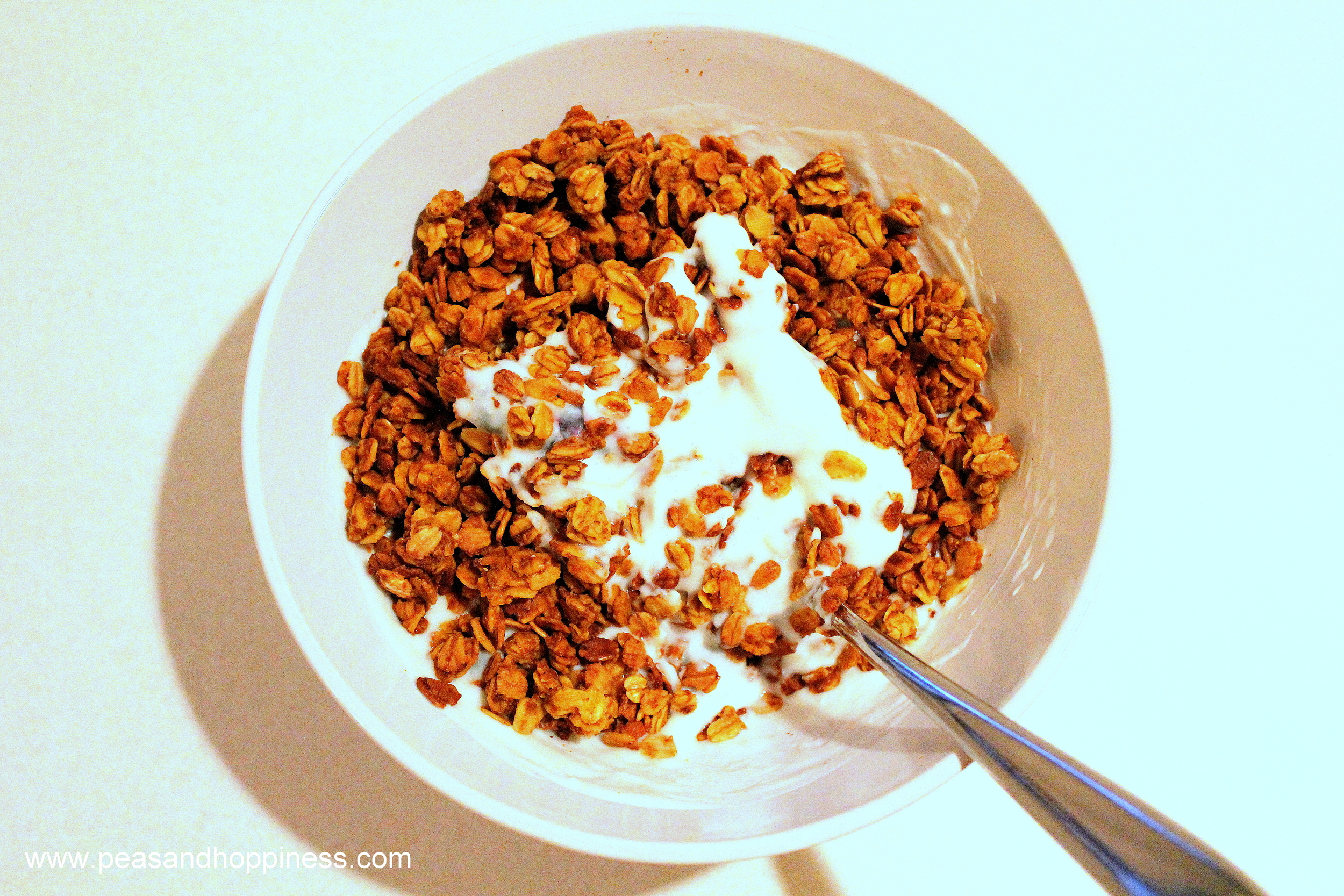
These delightful little organisms are often thought of in a less-than-happy light. Yeast infection. Strep throat. Need I say more?
But, as it turns out, these tiny creatures live in, on, and all around us — in peace and harmony most of the time. Maybe you’ve heard of this? Commercially, these bacteria go by the popular name probiotics.
Perhaps you’ve taken a probiotic supplement yourself. Or perhaps somebody — a friend, family member, or doctor — has recommended one to you. Perhaps you’re like me, and you are terrible at taking pills regularly (sorry, Vitamin D that has been sitting in my medicine cabinet since last winter).
So. Are probiotics worth the hype? The answer is…. (drumroll, please)…
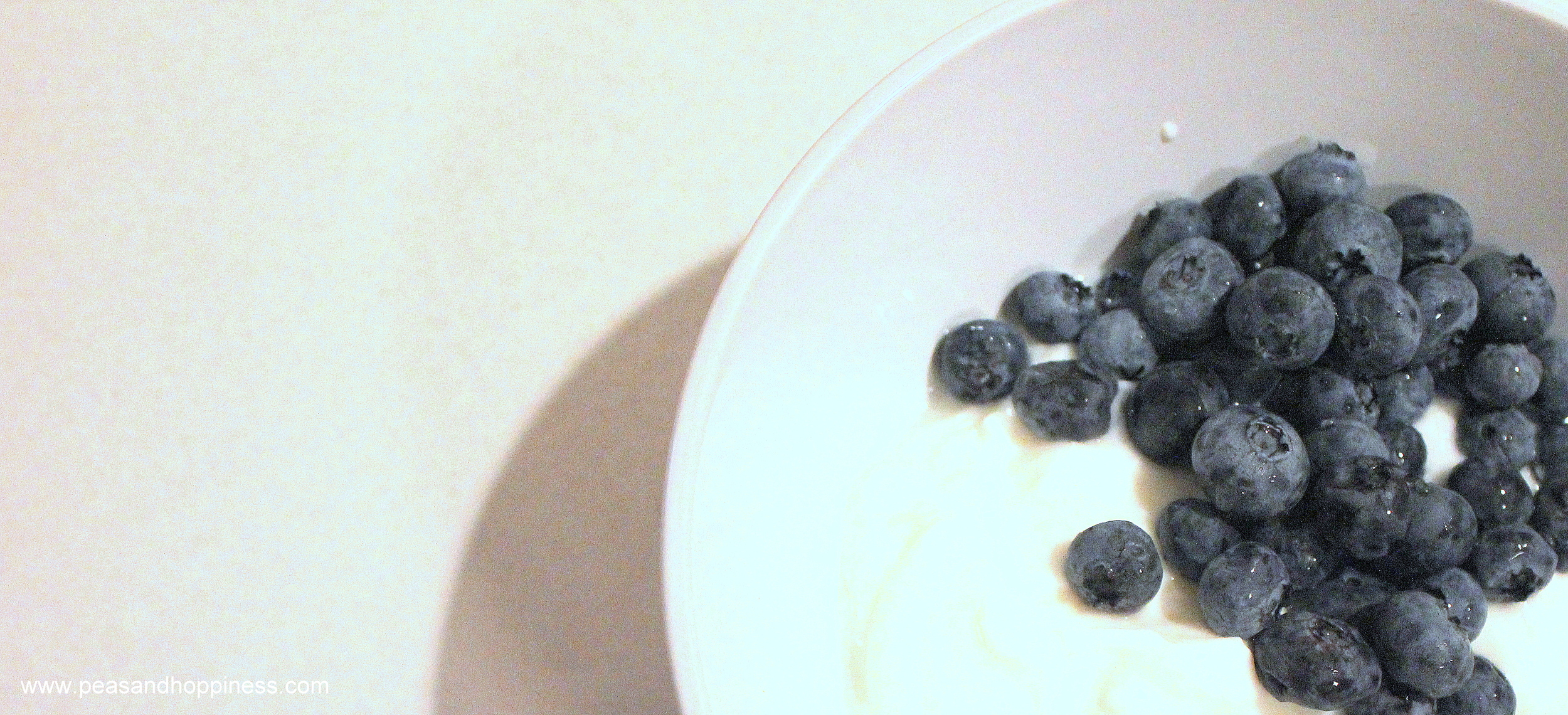
Probably.
Alas, I wish I had the final answer for you. The truth is, we are just at the tip of the iceberg when it comes to research about the bacteria that inhabit your gut. I want to tell you all about these friendly fellows, but I think I’d better introduce you to them first.
Friend, meet your microbiome (that’s pronounced my-kro-by-ome). Your microbiome is a collection of the (literally) millions of bacteria that currently inhabit your gut (and live on your skin, in your mouth, and in your more private areas). Very recently in terms of scientific discovery, we’ve learned that together these bacteria function almost like a separate organ for us. Yes, that’s how important these bacteria are.
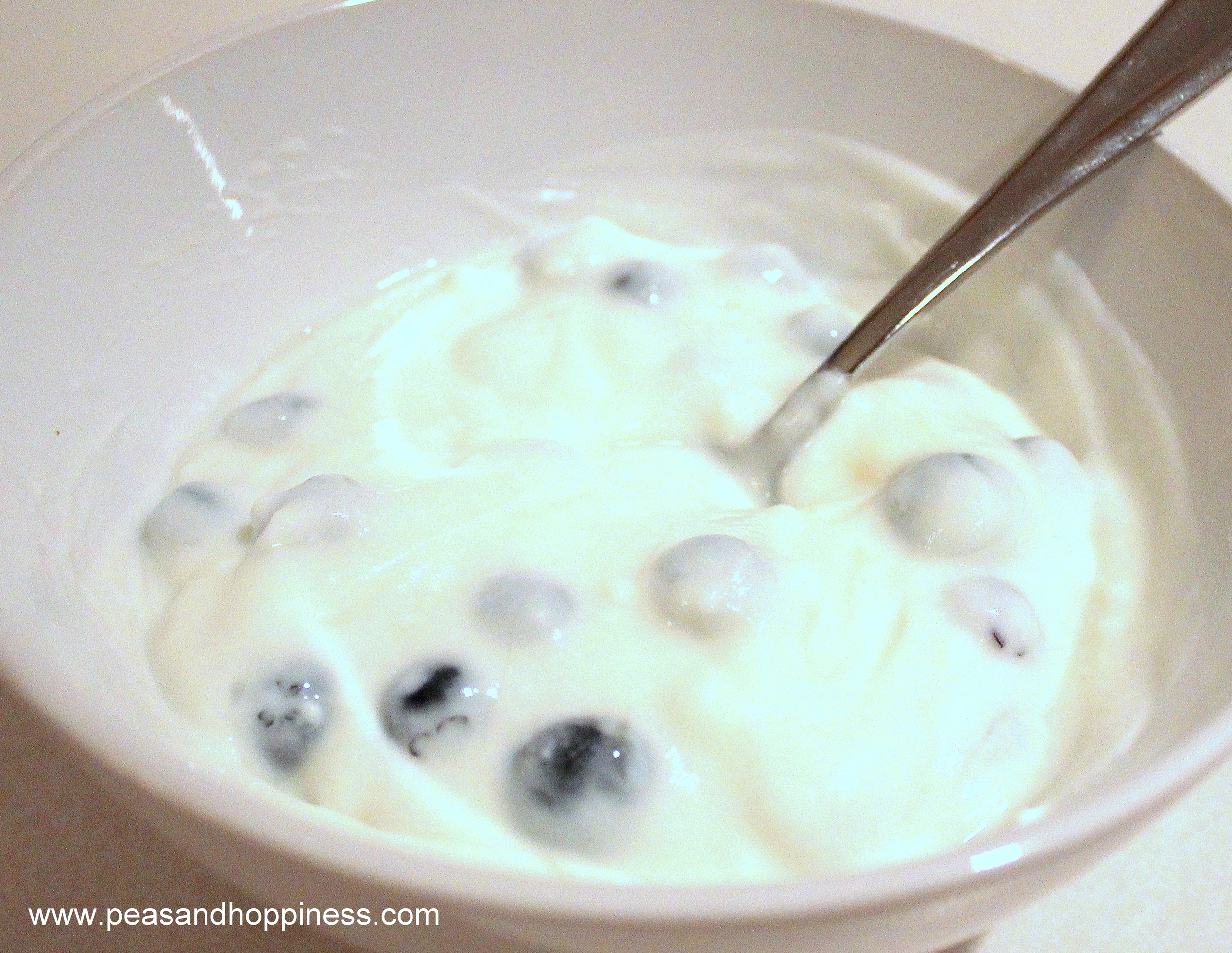
As it turns out, your microbiome is as unique as you are. There are hundreds (or perhaps thousands) of different strains of bacteria residing in your small and large intestines. The types and amounts of these bacteria are influenced by:
-
Your genetics
-
Your mom (and whether she gave birth naturally or via c-section)
-
Your diet
-
The antibiotics you take
I emphasize diet because, of course, this is what you have the most control over. It also happens to be one of the most influential pieces in deciding your gut health.
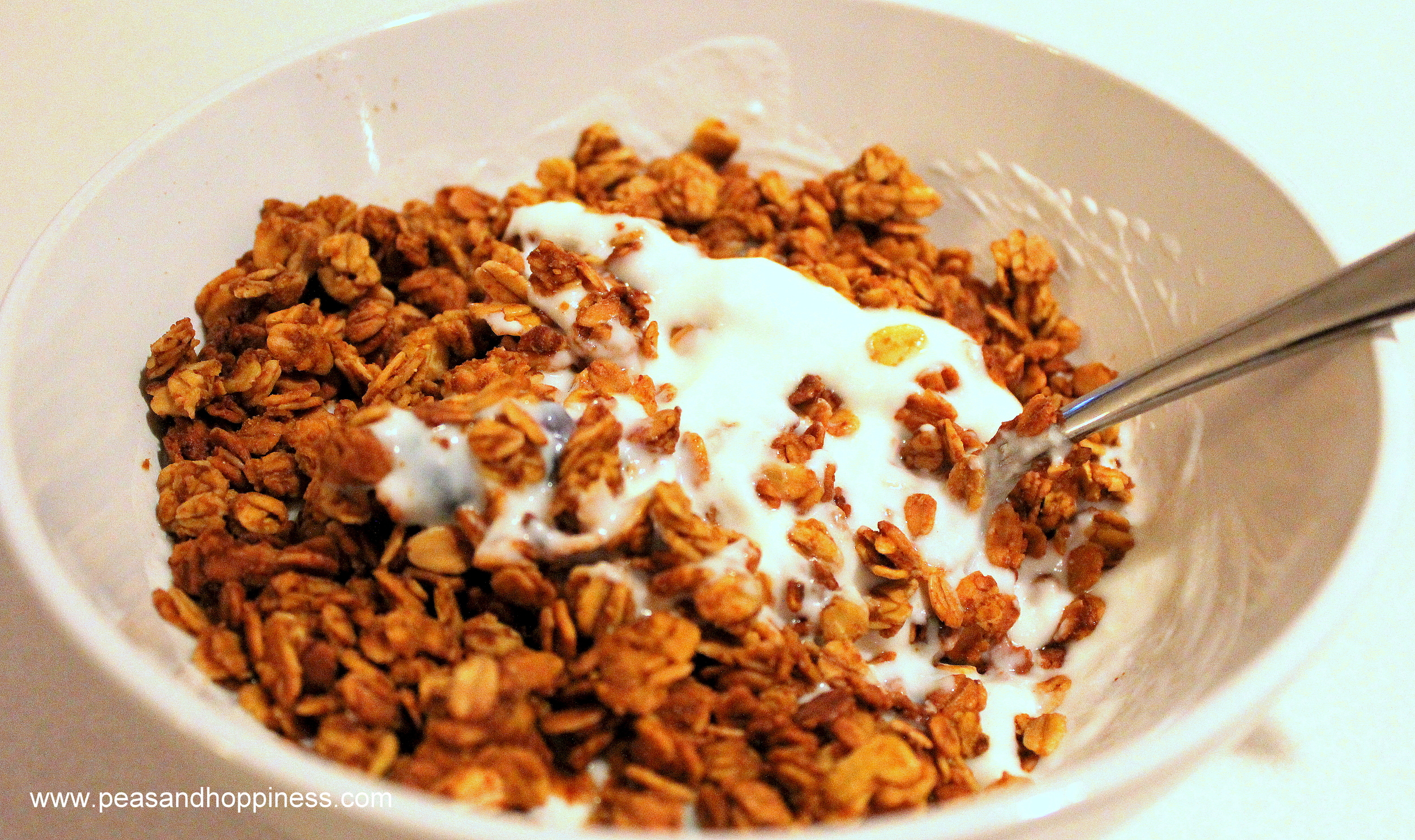
So what can you do to support good gut health? Focus on the Three Ps of gut health: Probiotics, prebiotics, and polyphenols.
Probiotics
As mentioned before, probiotics are the healthy bacteria theselves. They are found in fermented foods, like sauerkraut or yogurt, or now in some popular probiotic supplements. There is a lot of controversy as to how much effect eating these foods has on the types of bacteria that reside in your gut.
You see, your digestive system is designed to be one of the first defenses against infection. In order to make it to your large intestine, where most of the healthy bacteria live, these little guys have to survive the incredibly acidic environment of your stomach.
Gastric juice in the stomach has a pH of between 1.5 – 3.4 (here’s a table to compare other substances with these pH levels), a strong enough acid to start unravelling proteins, thus killing most living organisms.
Am I saying it’s futile to eat fermented foods or attempt to change the flora of your gut? Definitely not. The more fermented foods you eat — or the higher quality probiotic that you take — the more likely it is that a few of these good guys sneak into your intestines unscathed to set up camp.
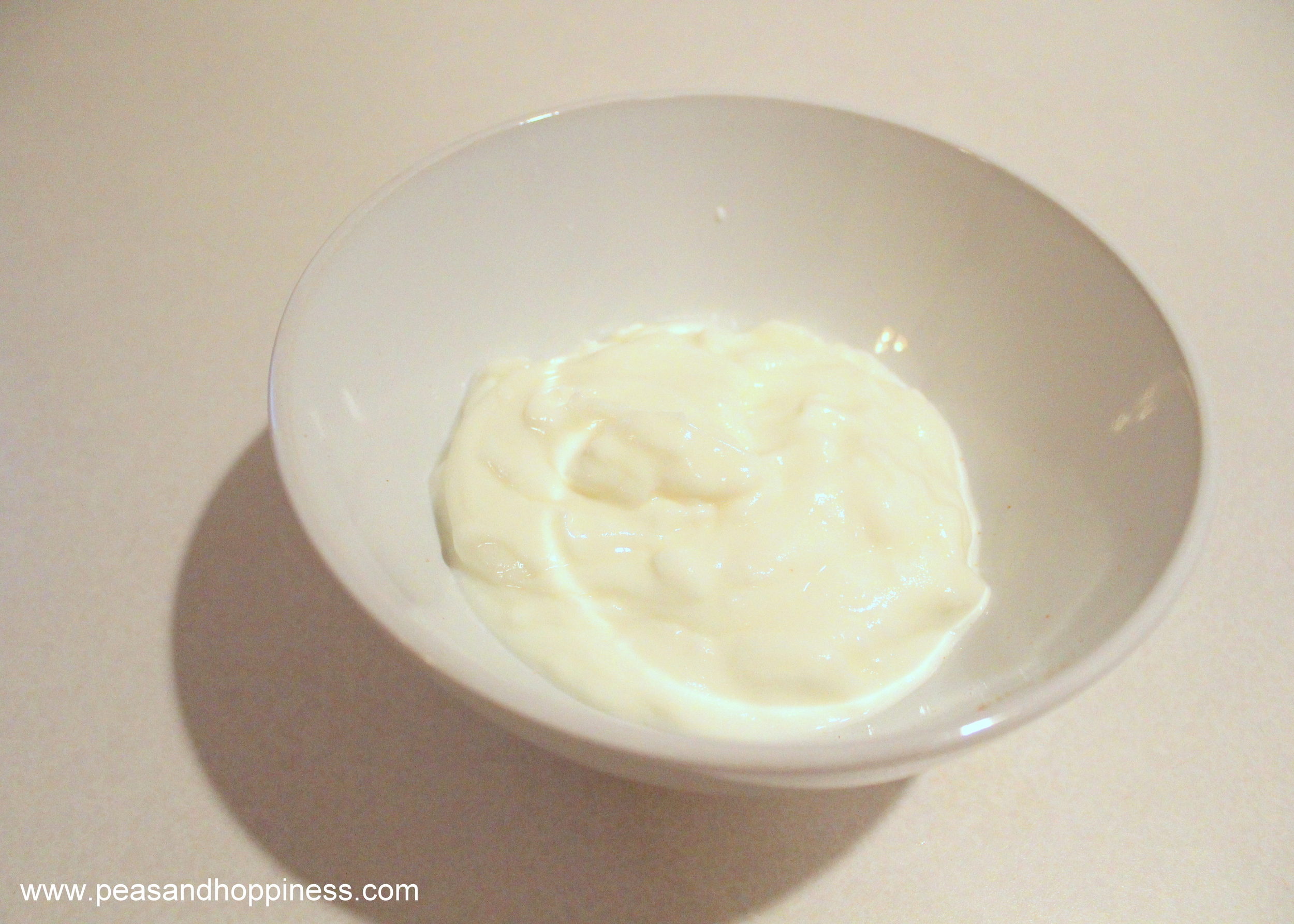
Prebiotics
Prebiotics is the fancy name for the food that gut bacteria eat — without providing healthy food for your good bacteria, taking probiotic supplements is essentially worthless. As it turns out, what you eat either feeds the good guys or the bad guys. Your diet is not neutral in this battle.
Prebiotics for good guys: indigestible carbohydrates such as fiber and some other short-chain carbohydrates. You get this stuff from vegetables, fruits, legumes (beans and lentils), nuts, seeds, and whole grains. Healthy bacteria literally eat this up.
Prebiotics for bad guys: proteins and amino acids. If your diet is not high enough in fiber, your gut bacteria starts to break down amino acids, which produces a number of undesirable metabolites. These include things like ammonia and hydrogen sulfide, which play a role in the initiation and/or progression of things like colon cancer and inflammatory bowel disease.
Um, yuck. Let’s all eat more fiber.
Polyphenols
Reason #782 that taking a multivitamin just isn’t the same as eating your fruits and veggies: Polyphenols. These are mystical compounds made by plants found in the colors of your fruits and vegetables.
Foods like red wine and cocoa are particularly high in polyphenols. Research indicates that including these in your diet can increase healthy gut bacteria such as lactobacilli and bifidobacteria.

If you want to learn more about probiotics, I suggest reading this great meta-analysis published by the British Medical Journal, which is the main article I referenced. I also recommend listening to this interview from America’s Test Kitchen podcast with David Katz, founding director of the Yale-Griffen Prevention Research Center (and much more; his bio is impressive). In the interview, Dr. Katz discusses the nuance of nutrition and (briefly) discusses the early (and exciting!) research on the microbiome.
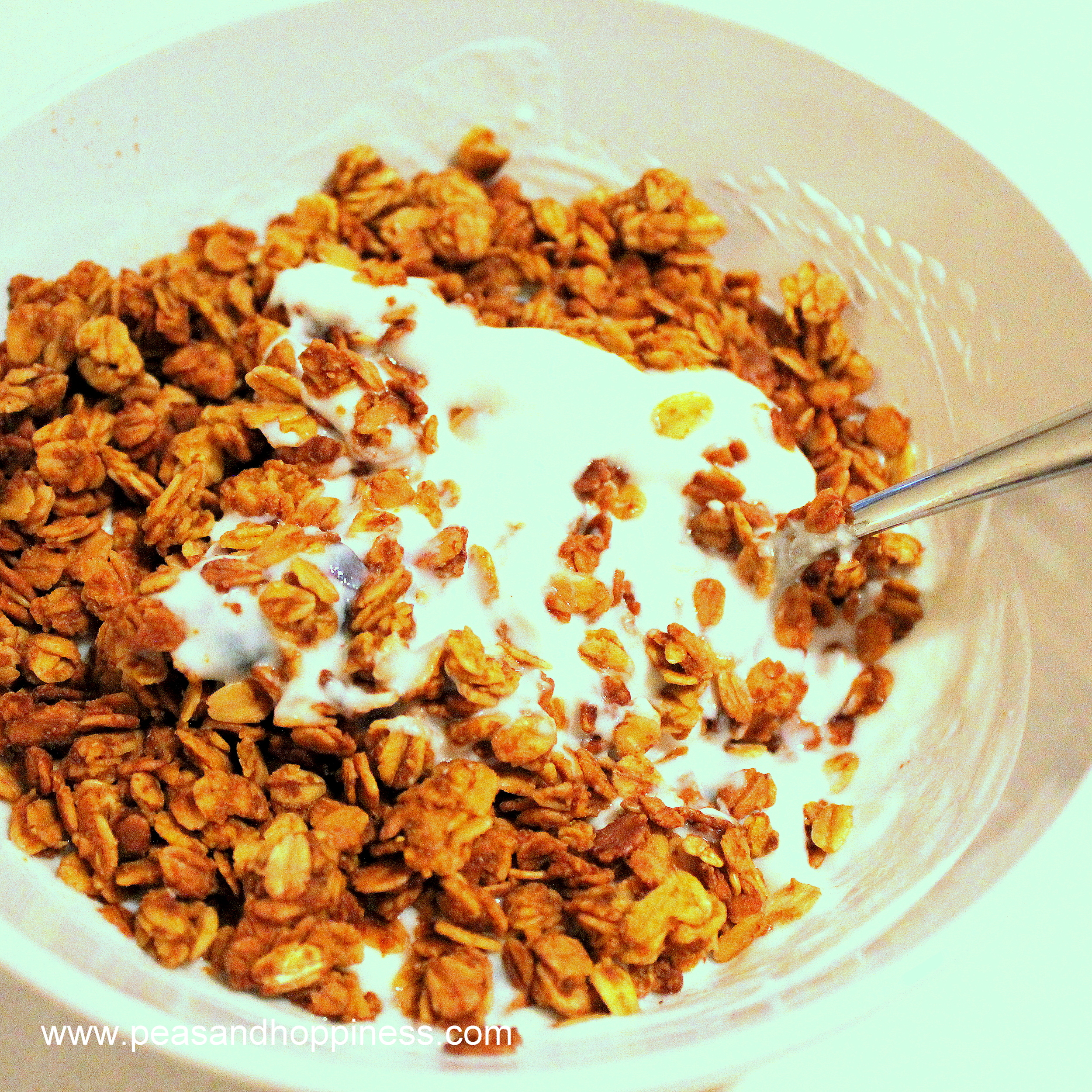
A simple, easy, and delicious way for you to include more probiotics is to eat yogurt. Yogurt is simply milk that has been transformed by different types of (healthy) bacteria to create a whole new food. These yogurt parfaits are one of my favorite breakfast/snack/desserts.
I usually take pre-packaged yogurt cups with me to work (because, let’s face it, these save me five extra minutes of sleep), but I really love the flavor of these simple parfaits. They’re not overly sweet and I love that you can taste the tang of the yogurt.
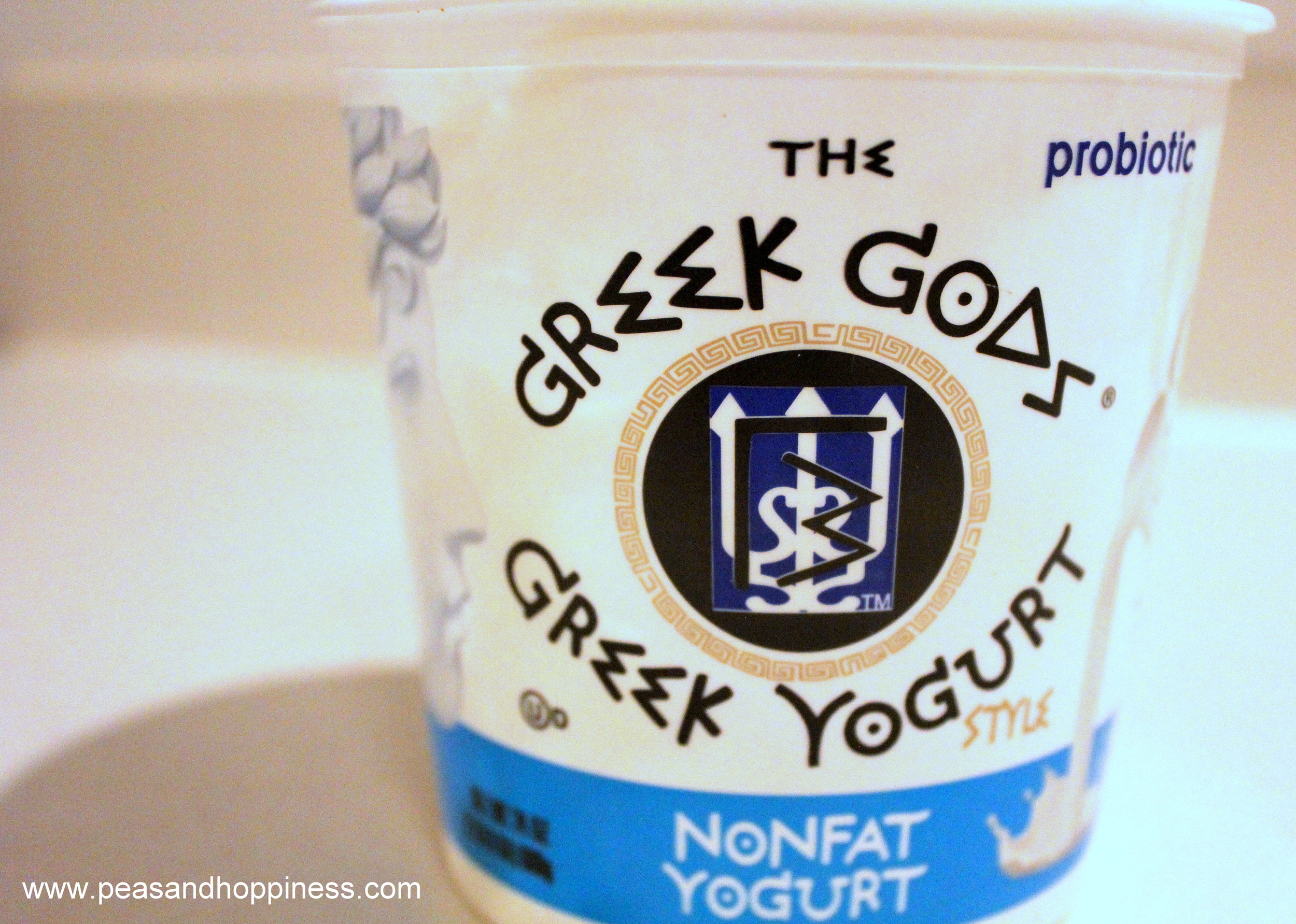
First, scoop a cup of plain, non-fat yogurt into your bowl. Make sure that it contains live, active cultures — these are the probiotiocs that we’re talking about!
For breakfast, I prefer to use Greek yogurt. Greek yogurt has been strained an extra time to remove some of the whey and lactose from the milk, resulting in a thicker consistency than regular yogurt — and one that is higher in protein and calories. I need substance in my breakfast, and Greek yogurt is a good option.
If you’re having this as a bedtime snack, I would recommend using regular yogurt. You still get all the great probiotic benefits, but you don’t really need a lot of protein or calories before sleeping.
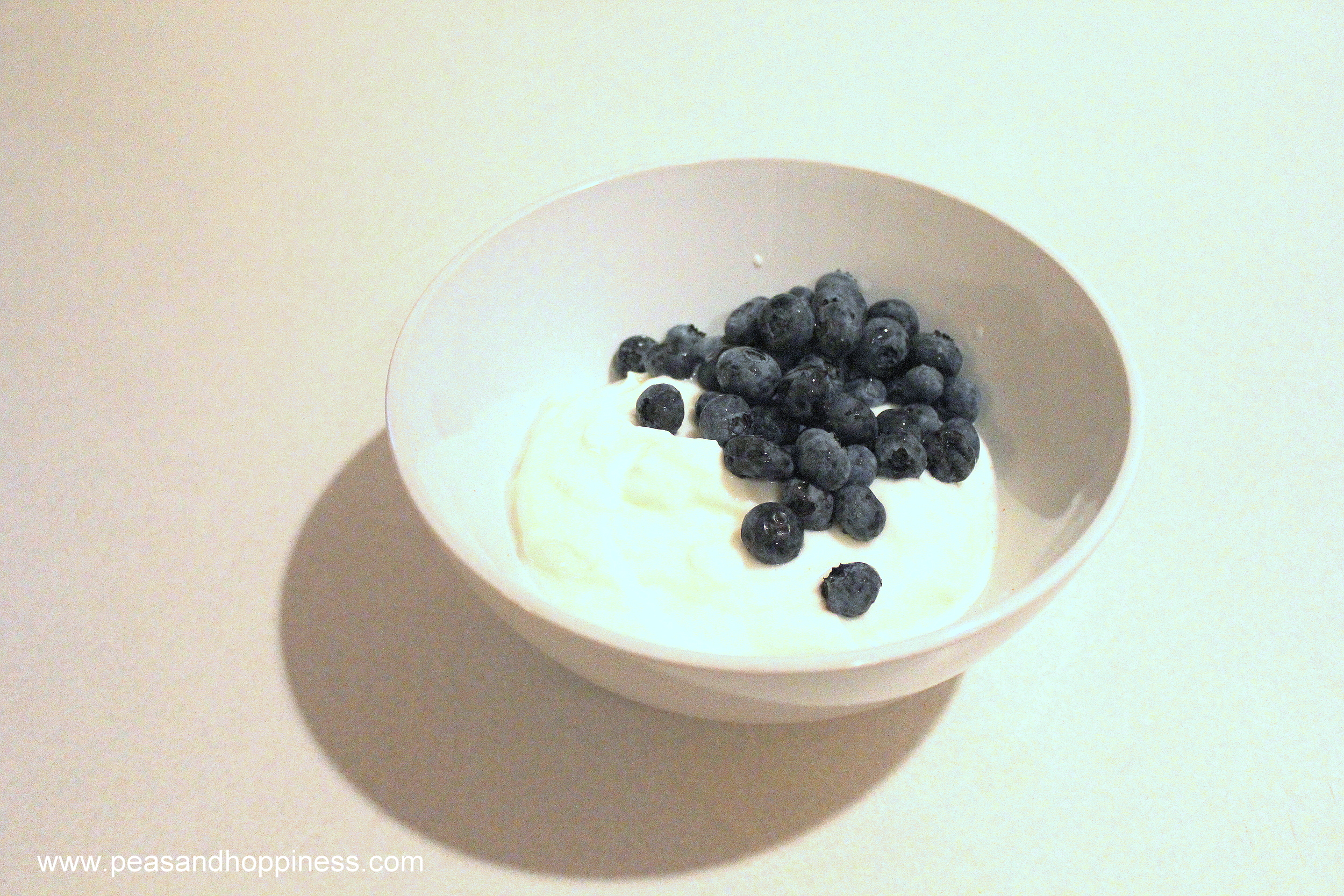
Add a cup of your favorite fruit. We had blueberries on hand, but you can use just about anything: strawberries, raspberries, peaches, bananas, pineapple… whatever you want!
Sweeten with one or two teaspoons of your favorite local honey. I am very, very lucky that my amazing father-in-law has recently taken up a hobby of raising bees. This means that I have my very own home-grown Kansas honey. It is, in a word, delicious.
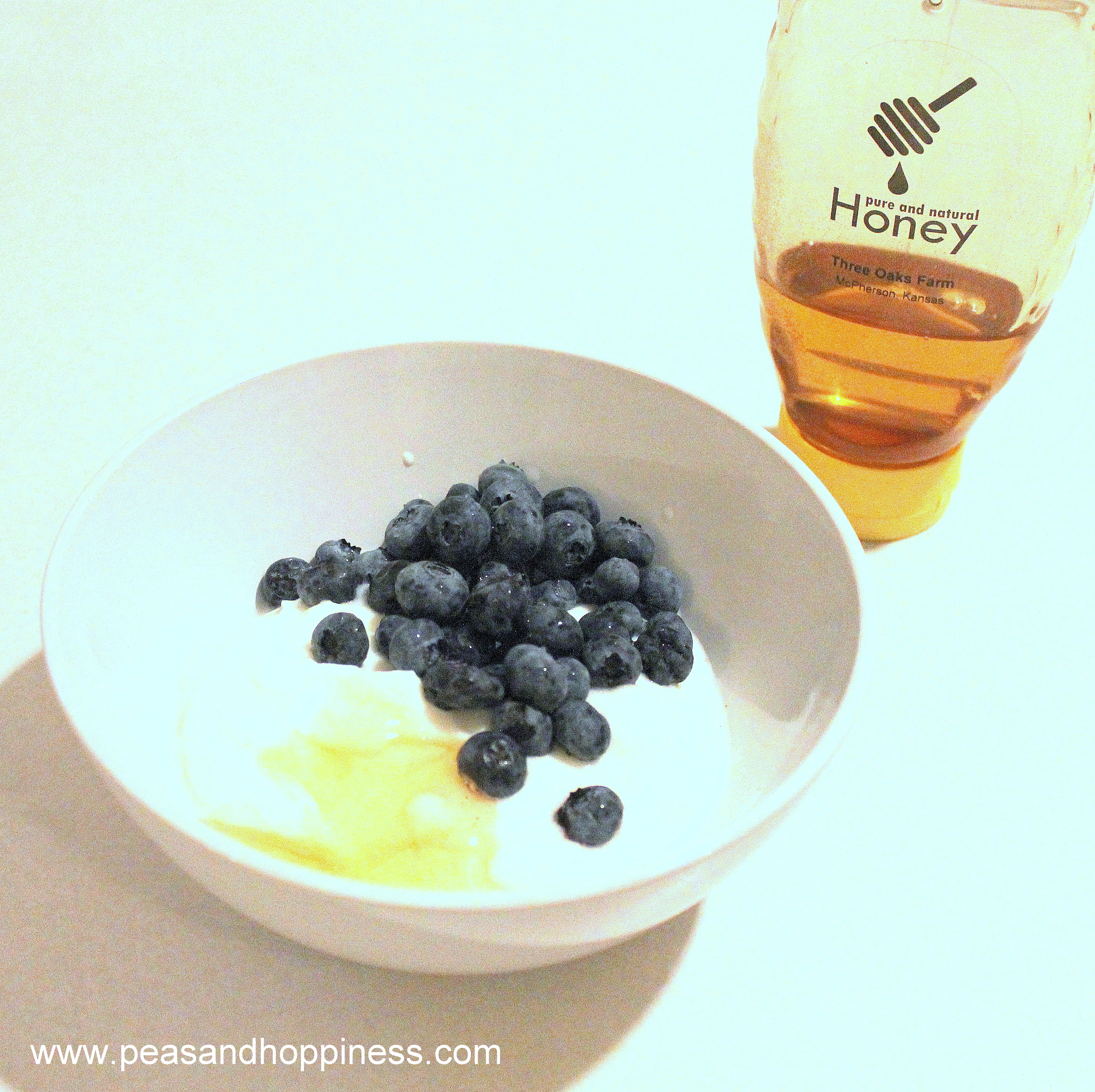
Mix it all together and gobble it up! Or, if you’d like, add a little of your favorite granola for a bit of crunch (and for a few of those prebiotics that we were talking about earlier).

Nutritious and delicious! Enjoy!
Fruit & Yogurt Parfaits
Ingredients:
-
1 c. non-fat, plain Greek yogurt
-
1 c. blueberries (or other favorite fruit)
-
1 tsp. honey
-
1/4 c. granola
Instructions:
-
Mix yogurt, fruit, and honey together.
-
Just before serving, stir in granola.
Serves 1 – Serving Size: 2 cups – Nutrients per serving: 383 calories — 8g total fat — 1g saturated fat — 10mg cholesterol — 94mg sodium — 52g total carbohydrates — 6g fiber — 29g protein